20 Mentor Training Modules 4: Starting and Leading Conversations
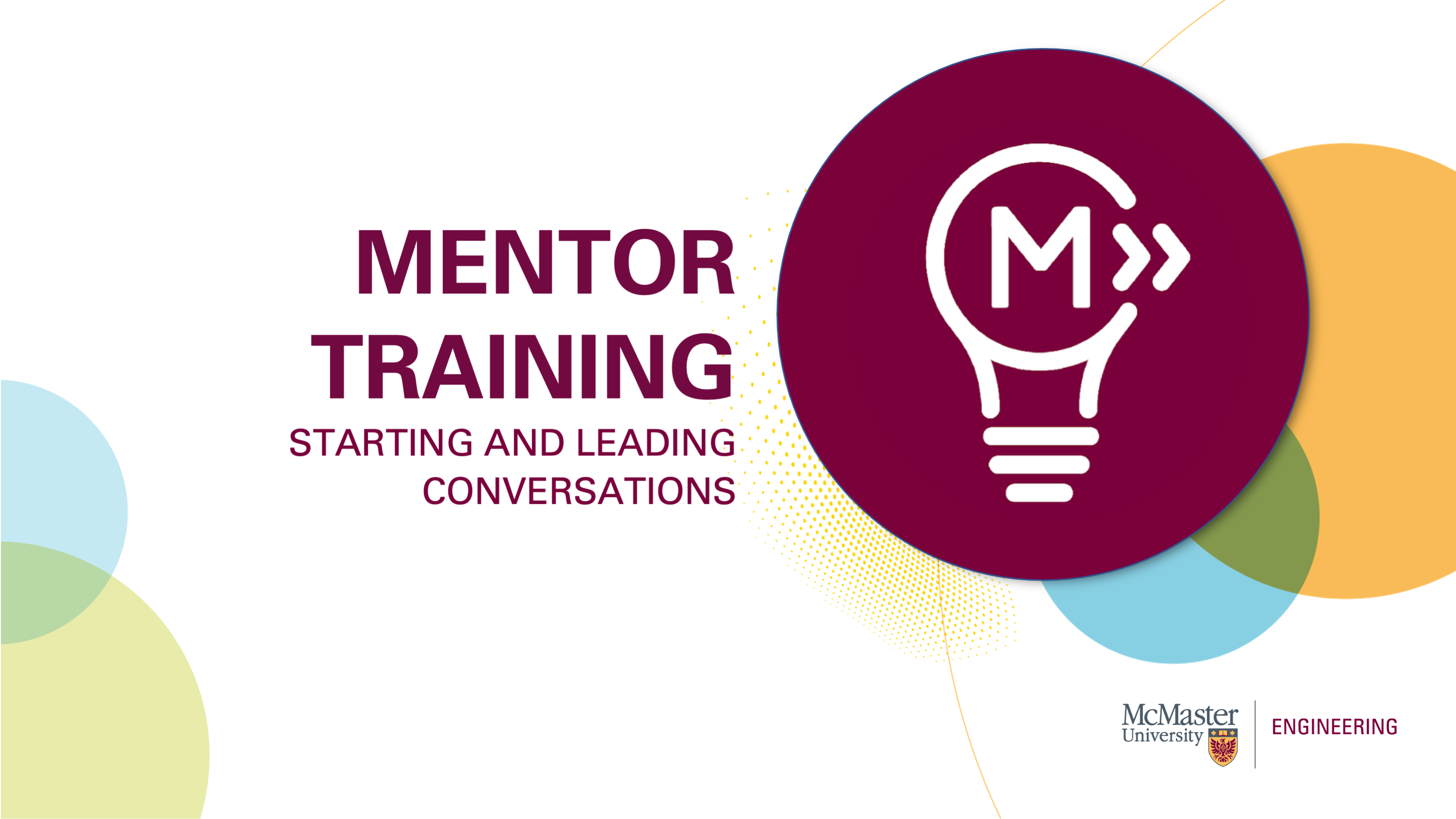
Hey everyone, welcome back to the mentor training modules. This time around we will be discussing starting and leading conversations. Just a quick note, this module is best run synchronously so that mentors can practice starting and leading conversations.

The best way to start conversations is none other than icebreakers! They are a great way to improve group dynamics from the beginning. Imagine being in a group where everyone feels awkward talking to each other versus a group where everyone is excited for meetings and doing group work because the group just communicates well. The second scenario sounds a lot more fun, so that is something ice breakers can push you towards. Encouraging students to break out of their comfort zone, at least communication wise, will help them bond and work better together in the future. Take it from a physics perspective. One of Newton’s three laws is inertia. A body of mass at rest takes an external force to move. In an ideal world, that body of mass will continue moving until there is an equal and opposite external force. Take the icebreakers as a way to alleviate stress and provide your groups the external force they need to get going and gain traction and trust amongst each other as a group.
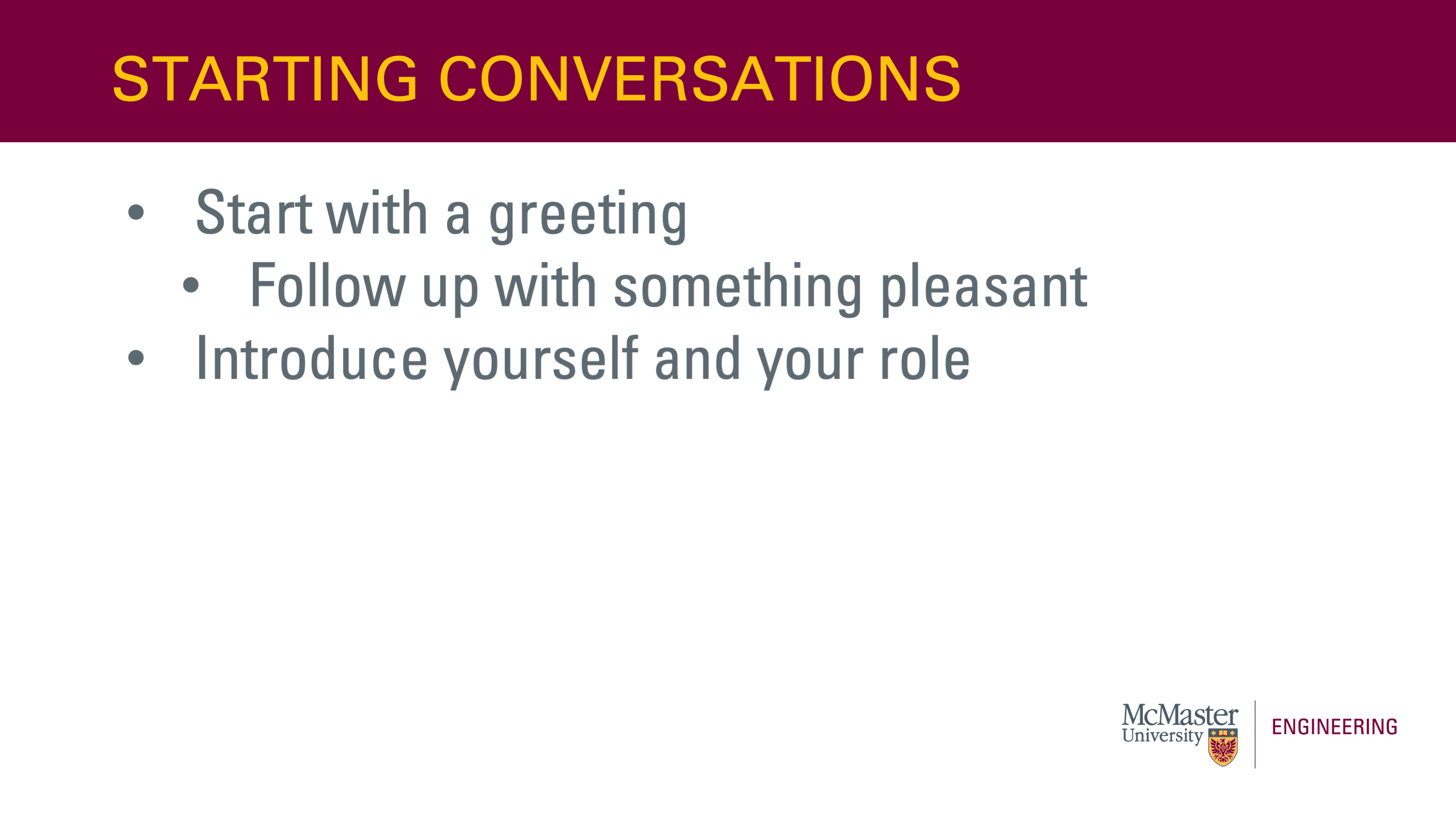
If icebreakers aren’t the right fit, here is an accepted way to professionally start a conversation. Start with a greeting. A simple “hey!” or “hello!” is great! Notice how I am starting off with a higher tone so the other feels welcome to the conversation and can clearly see that you are trying to make the effort to have a conversation with them. Next, follow up with something pleasant like a compliment or something warm, again, to welcome others to the conversation. Finally, introduce yourself and your role.
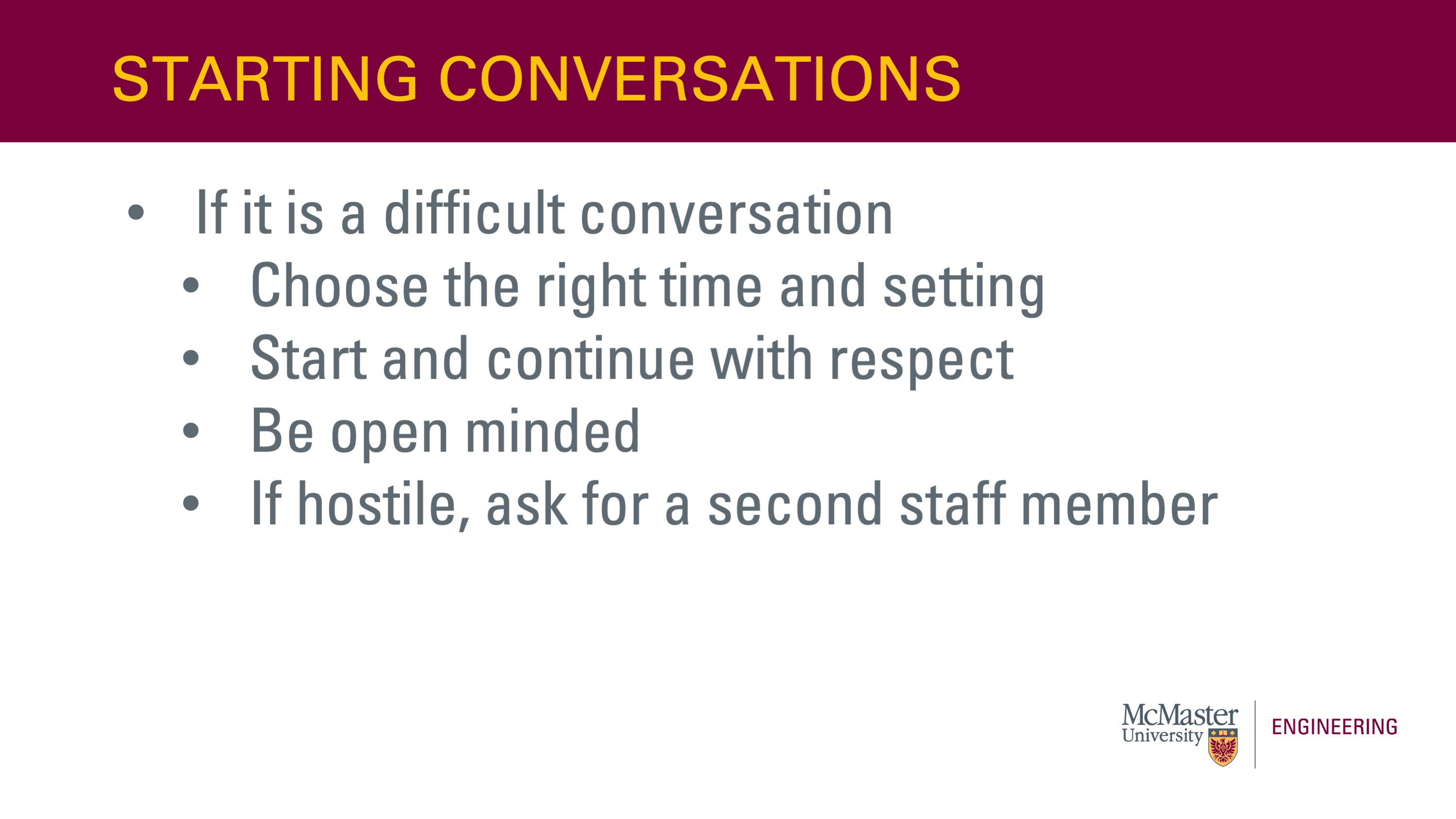
If you anticipate a conversation to be difficult, we have a few different tricks to get your started. First of all, choose the right time and setting. Make sure you get the individual at a good time and make sure they are not occupied with anything else at the time. Next, be respectful. Just because it is a difficult conversation, that does not mean you need to be rude. There is always a way to be kind, just do your part to practice saying your points and finding that kindness. Next, be open minded and make sure you’re willing to listen to the others in the conversation. This will make sure there are no confusions and make sure everyone feels heard, especially during in a tense environment. To recall our conversation about accountability, if you have been keeping track of project expectations and if you have been defining each group members role throughout the process, even difficult conversations should not be coming as a surprise. Rely on the evidence you have to explain your reasoning. If it feels like the conversation could become hostile, ask a second staff member to attend the meeting to ensure that you have someone from the team there as help keep emotions controlled and calm.
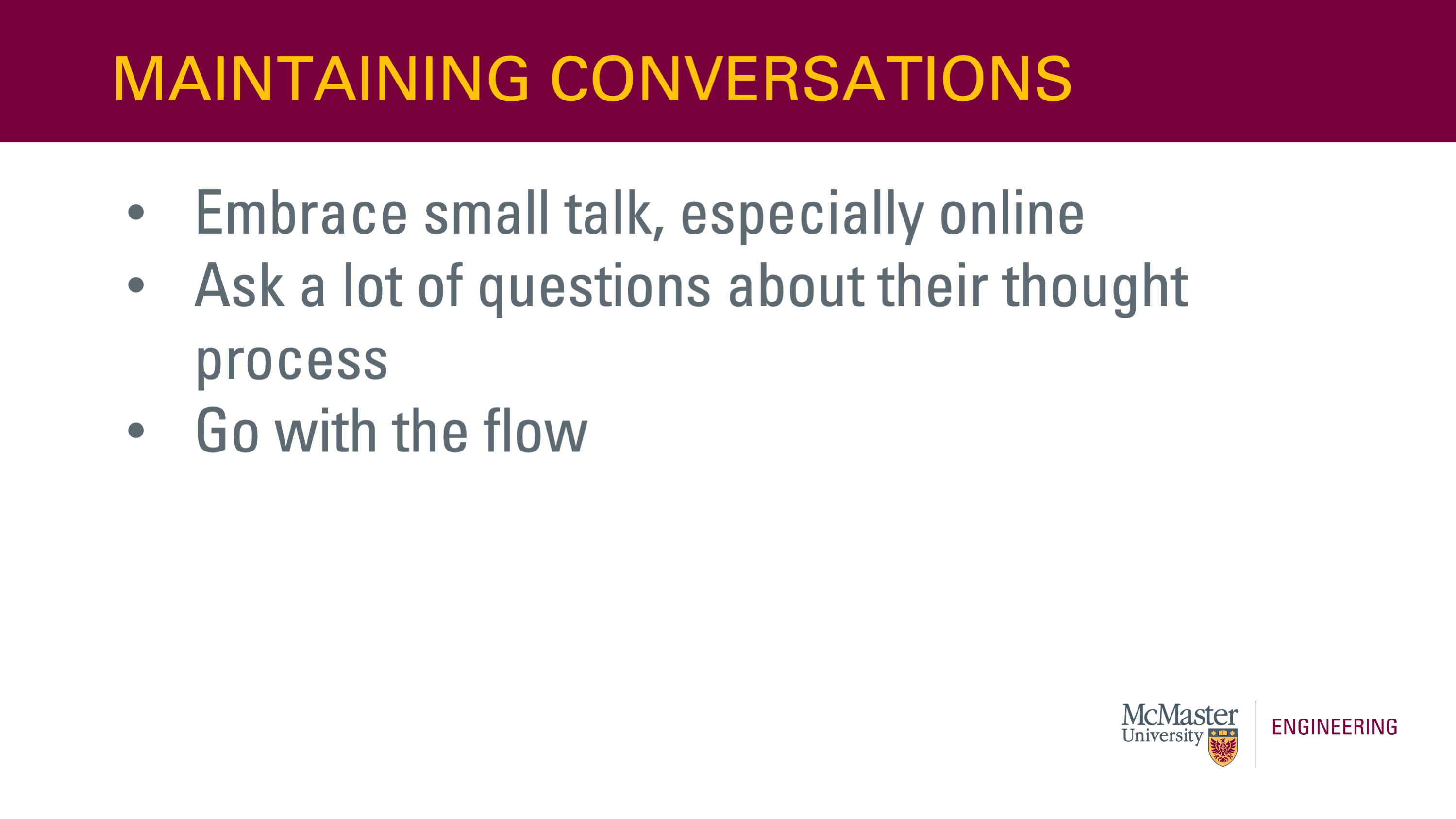
Now that the conversation is started, we get into maintaining conversations. In an online world, small talk is a lost art. Learn to embrace it, have small talk with your groups and learn to talk to them beyond just the conversation on the agenda. It will make them feel more human in the process.
Next, ask a lot of questions! If I were to put two dots on a paper, I could connect them with a straight line, a zigzag, a concave up curve or whatever other way you can imagine. Just like that, there are multiple ways to get to an answer, so try to understand their thought process.
Finally, just go with the flow. If you had something to say about a topic that has already passed, don’t bring it up again, rather bring it up later through email. Keep the conversation flowing and get through the entire agenda.
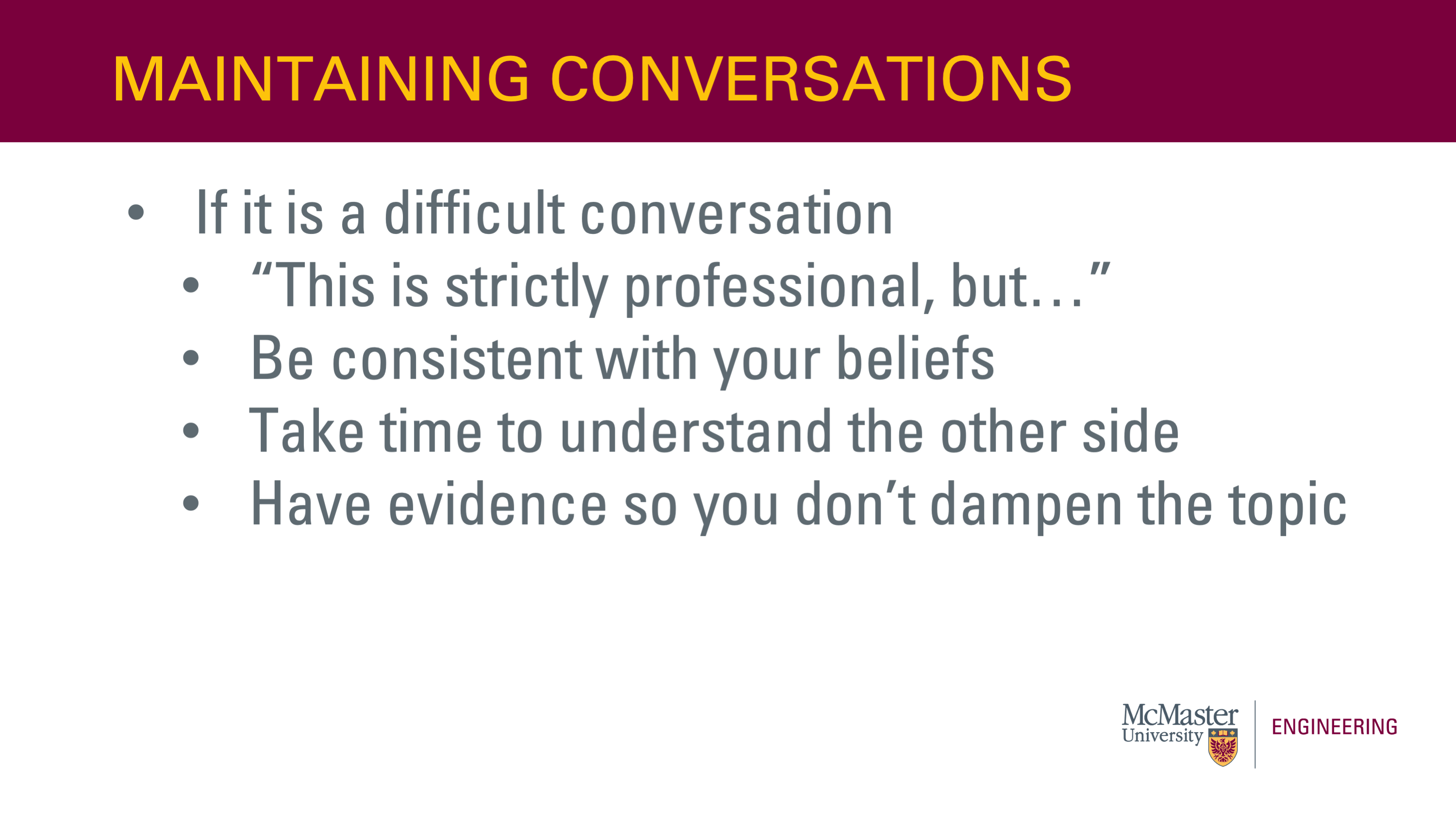 Now, let’s suppose it’s a difficult conversation. Just like we have techniques for starting difficult conversations, we have techniques to maintain them. First, start with “This is strictly professional, but…”. Establishing the personal versus professional connection is crucial. You may be peers with the group members, but in this scenario you are the leader. Make sure you understand your role as the professional and don’t take anything personally nor make it personal for them.
Now, let’s suppose it’s a difficult conversation. Just like we have techniques for starting difficult conversations, we have techniques to maintain them. First, start with “This is strictly professional, but…”. Establishing the personal versus professional connection is crucial. You may be peers with the group members, but in this scenario you are the leader. Make sure you understand your role as the professional and don’t take anything personally nor make it personal for them.
Next, be consistent with your beliefs. Nothing dilutes a conversation quicker than having someone question whether their opinion is correct or not. So you would be doing everyone a favour by sticking to your beliefs.
Next, take time to understand the other side. It is crucial that everyone feels heard in the process. No one should leave the conversation with discomfort knowing that they did not say what they needed to say.
Finally, just like being consistent with your beliefs, you should try to have evidence to ensure you point is not dampened. Dampening the point will only make it feel less important, which is definitely not the case if you are having this conversation, so bring some evidence to back up the point you want to make.
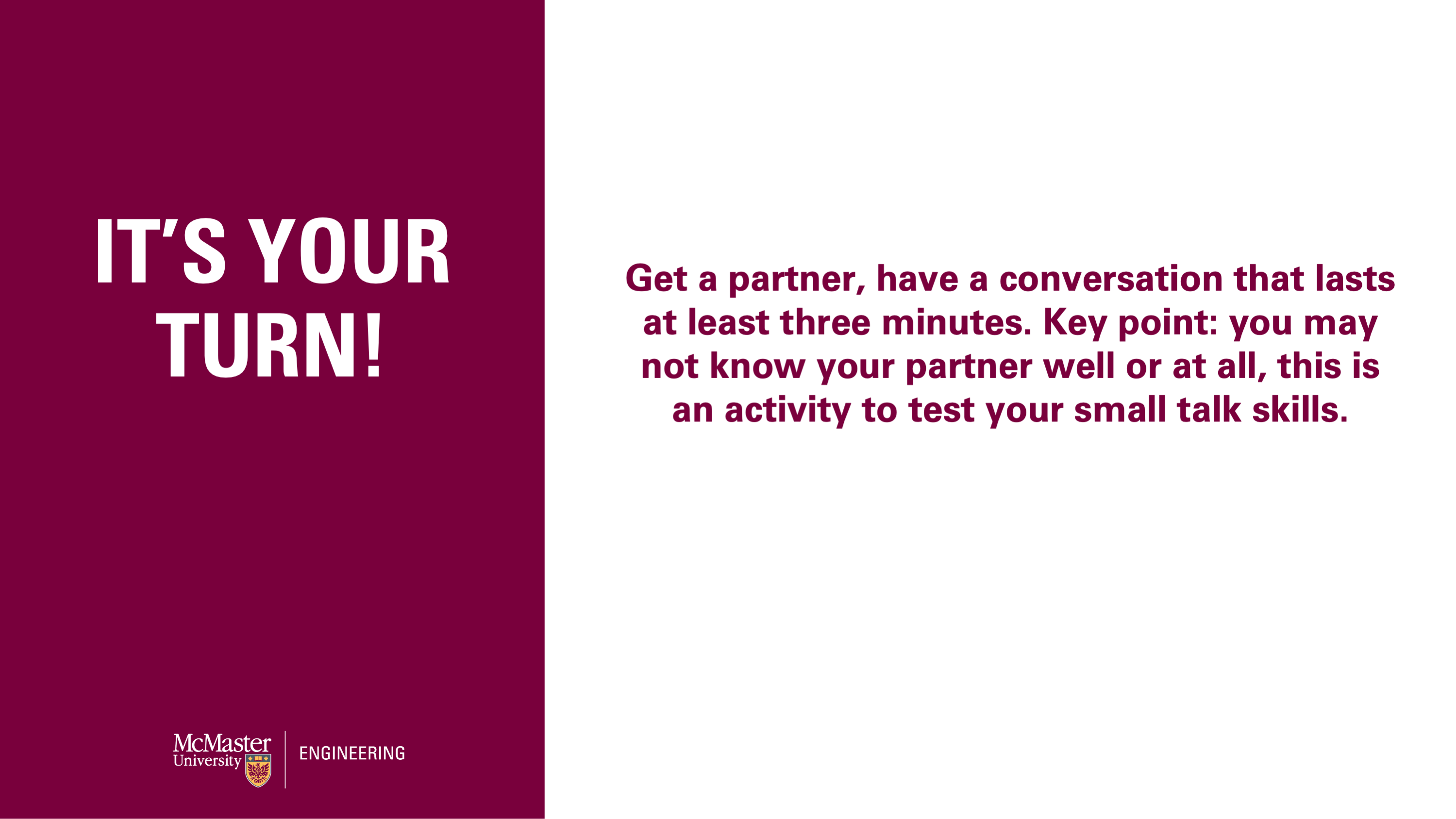
For this modules activity, get a partner. Have a conversation that lasts a minimum of 3 minutes. The key point here is that you may not know your partner well, if at all. If you are not participating in this module as a group, try to initiate the conversation in the next scenario you find yourself in. How long can you keep it going?
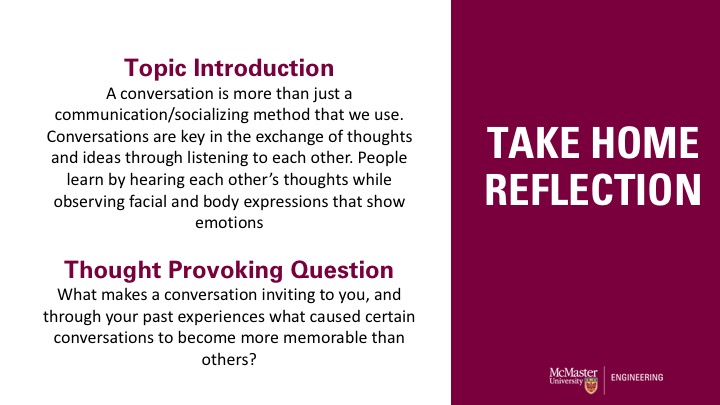
Thank you for completing the fourth module in the mentor training series. Take time to reflect on what has made you feel comfortable in conversations with new people. Consider also difficult conversations you may have had in the past. What could have made them a better experience?
References
Manning, T. (2002). Strategic conversation as a tool for change. Strategy & Leadership, 30(5). https://doi.org/10.1108/sl.2002.26130eab.001
Nasir, M., Lyons, K., Leung, R., Bailie, A., & Whitmarsh, F. (2015). 25th Annual International Conference on Computer Science and Software Engineering . CASCON ’15: Proceedings of the 25th Annual International Conference on Computer Science and Software Engineering. https://dl.acm.org/doi/10.5555/2886444.2886464

